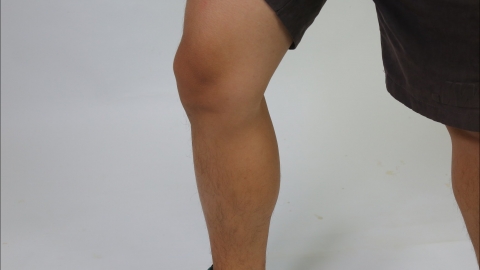What are the causes of leg weakness during the recovery period of cerebral hemorrhage?
Generally, leg weakness during the recovery period of cerebral hemorrhage may be caused by disuse muscle atrophy, slow recovery of nerve function, impaired cerebral blood circulation, electrolyte imbalance, or hydrocephalus. If experiencing any discomfort, it is recommended to seek timely treatment at a reputable hospital. Detailed explanations are as follows:
1. Disuse Muscle Atrophy
After cerebral hemorrhage, patients may experience prolonged bed rest or reduced leg movement, leading to muscle atrophy due to lack of exercise, which results in decreased leg strength. Under the guidance of a doctor or rehabilitation specialist, perform leg functional training, such as ankle pump exercises, straight leg raises, beginning with simple movements and gradually increasing training intensity and duration.
2. Slow Recovery of Nerve Function
Cerebral hemorrhage may damage nerves in the brain responsible for motor function. Nerve repair and functional recovery require a long time, during which leg weakness may occur. Under a doctor's guidance, neurotrophic medications such as Mecobalamin Tablets, Vitamin B1 Tablets, and Cytidine Diphosphate-Choline Sodium Capsules may be used to promote nerve repair.

3. Impaired Cerebral Blood Circulation
After cerebral hemorrhage, cerebral blood vessels may develop narrowing or spasms, leading to insufficient cerebral blood supply, affecting the normal function of the motor center, and causing leg weakness. Avoid maintaining the same posture for long periods in daily life; change positions appropriately to promote cerebral blood circulation. Under medical guidance, medications that improve cerebral circulation, such as Ginkgo Biloba Leaf Extract Tablets, Nimodipine Tablets, and Betahistine Tablets, may be used.
4. Electrolyte Imbalance
During the recovery phase of cerebral hemorrhage, patients may develop electrolyte imbalances such as hypokalemia or hyponatremia due to poor diet or vomiting, which affects normal muscle contraction function, leading to leg weakness. Adjust the diet, consuming more potassium- and sodium-rich foods such as bananas, oranges, and lightly salted water. If electrolyte imbalance is significant, medications such as Potassium Chloride Sustained-Release Tablets, Sodium Chloride Injection, and Potassium Magnesium Aspartate Tablets may be required under medical supervision.
Following cerebral hemorrhage, impaired cerebrospinal fluid circulation and absorption may lead to hydrocephalus, which can compress brain tissue, affect nerve conduction, and result in leg weakness. Symptoms may include headache, nausea, vomiting, and urinary incontinence. Depending on the severity of hydrocephalus, surgical treatment options such as ventriculoperitoneal shunting may be considered.
In daily life, maintain a balanced nutrition, consume more protein- and calcium-rich foods such as eggs, milk, and soy products. Based on individual recovery status, gradually perform leg rehabilitation exercises to progressively enhance leg strength.





